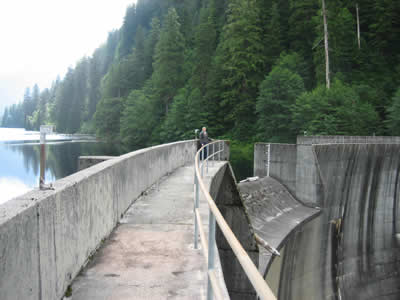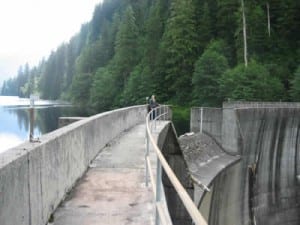The Alaska Energy Authority this summer is releasing the final version of a million dollar plan for energy in Southeast. A contracting company drafted the planning document with input from a 22-member working group. However, recommendations in the plan met with criticism and opposition this year.
For iFriendly audio, click here:
The Southeast Alaska Integrated Resource Plan aims to show what energy resources can be developed to meet electricity and heating needs for Southeast’s homes, offices and businesses. The plan says the region is at a historic crossroad for energy generation. It recommends a mix of preferred projects and energy conservation, as well as wood pellet and biomass heating.
“A key aspect of this is that we did view the heating energy requirements of the region as well as the electrical energy and to somewhat of a lesser extent but it’s still there, the transportation, the potential use of electric vehicles,” said Jim Strandberg AEA’s project manager for the plan. “And I do feel a coordinated treatment of those three parts are one of the real strengths of this plan.”
The document notes the gap between larger communities with available cheap hydro electric power, and those communities forced to run costly diesel generators. It calls recent conversions to electrical space heating the “Achilles heel” of the existing hydro system, with recommendations for more hydro storage projects. The consultants, engineering and construction company Black and Veatch, found that a region-wide transmission system does not make sense to build at this time, including a connection across the border into Canada.
Members of the plan’s advisory working group and members of the public faulted the draft plan during a public comment period this spring. Some called the document fatally flawed because it did not anticipate new development or make room for future growth in the region. Many in the region say the state and private companies can build more hydro plants and transmission lines to keep up with increasing demand. Others wanted to see more focus on existing clean technology like heat pumps or pursuit of wind, geothermal and tidal projects.
Working group member Robert Venables of Haines said the planning document is not the final word and the planning process is not done. “And that’s where some people I think really mischaracterize or misunderstood, including myself,” Venable said. “Many of us really thought that this was going to be the answer moving forward. And I think it really opened our eyes to the work that has yet to be done in order so we can better identify the next projects and where we need to focus our attentions and efforts to better plan for our energy security and needs going forward.”
The document recommends a two phased approach – the first five years would see pursuit of several projects, namely transmission line connections to Kake and Metlakatla, and new or expanded hydro in Sitka, Angoon, Hydaburg and Hoonah. Phase one recommendations would also mean energy saving measures to slow the growing demand for hydro power and speed conversions to biomass heating. The second phase would mean more planning to identify new hydro and other renewable projects to pursue.
Venables, who’s the energy coordinator for Southeast Conference, emphasized the additional work that needs to happen. “There’s a couple key findings within the report that we really need to encourage AEA and the stakeholders in the region to continue to work on so we can better understand, not only the loads that are on the horizon but the resources that best meet those loads.”
Venables called the AEA’s outreach in drafting the plan comprehensive and he praises the input collected from Southeast communities as well as the diverse viewpoints of the advisory working group. The completed document is comprised of three sections, a revised executive summary, detailed analysis of public comment and a section correcting mistakes in the draft plan.
“I don’t think it’s worth the paper it’s printed on,” said Republican state Senator Bert Stedman of Sitka. He’s co-chairman of the Senate Finance Committee and drafts the Senate’s version of the state’s capital budget. “My concern is it pushes Southeast in the wrong direction and that is to back up energy source of pellets and our energy source needs to be hydro backed up by LNG. And if we were to take that same solution to Fairbanks for the energy needs, they would throw it in the shredder. If we took it to Anchorage, and the Anchorage colleagues I have in Juneau, when I bring it up to them they just laugh.”
Stedman recommended putting the plan on the shelf and building more hydro projects. He’s expecting the next viable state appropriation could fund the raising of the dam at Swan Lake near Ketchikan. That move would increase available wintertime hydro power for Ketchikan, Wrangell and Petersburg.
Other potential energy sources identified in the planning document cost tens or hundreds of millions of dollars. The AEA’s Strandberg said a similar plan completed for the Railbelt has been used to secure appropriations for power and transmission infrastructure. “We are building on that now with a more detailed transmission plan for the railbelt as we speak. And so, that document is being used,” Strandberg said. “Our sincere hope is the Southeast IRP for all of its commenters and different viewpoints on it, that there are some really valuable things in that plan that can be used and would greatly benefit the region.”
Strandberg notes considerable public comment about potential transmission line connections outside of Southeast Alaska and said the authority continues to work on that possilibility.
The AEA hopes to post a completed plan on its website sometime in August.













